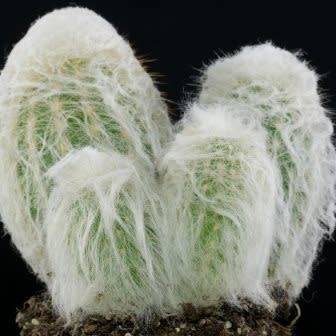









5 Espostoa melanostele Seeds - Xerophyte - Exotic Cactus - Edible Fruit - Combined Global Shipping
Check my rate
| Main centres: | 1-3 business days |
| Regional areas: | 3-4 business days |
| Remote areas: | 3-5 business days |










| Main centres: | 1-3 business days |
| Regional areas: | 3-4 business days |
| Remote areas: | 3-5 business days |

Espostoa melanostele Seeds
Rare Exotic Cactus with Edible Fruit

Espostoa is a genus of columnar cacti, comprising 16 species known from the Andes of southern Ecuador and Peru. It is usually found at an altitude of between 800m and 2500m. Its fruit is edible, sweet, and juicy. The genus is named after Nicolas E. Esposto, a renowned botanist from Lima. These candle-like cacti are covered with thorns and white hair. Only the older specimens can divide. In adulthood, a cephalium sometimes appears, similar to the Mexican genus Cephalocereus. They were discovered by Alexander von Humboldt and Aimé Bonpland in the early nineteenth century. They are appreciated for their decorative qualities due to their white fleece. They can be propagated by seed. For full development they must be planted in the ground. Like all cacti, Espostoa requires a sunny location and well-drained soil. But in summer, it appreciates fertilizer and wetter conditions. Espostoa melanostele is a species of rare, endangered, long-lived, slow-growing plant in the family Cactaceae. Horticultural collection and the fact that the plant is slow growing contribute to the fact that the plant is endangered. This xerophyte is tolerant of most droughts when mature. E. melanostele is a columnar cactus native to Peru. Spines easily detach from the plant. In rain, flowers close up completely. When dry, flowers open up again. Petals are usually joined in the wild, but some cultivated forms have prominently separated petals. Flowers are yellow, diurnal, and are rarely born on a cephalium, unlike its close cousin E. lanata. They start opening up in morning and stay open until evening, when they start to close up again for night. They are pollinated by insects. The fruit is edible, sweet, and juicy. A boost in growth is usually given by putting worm castings (earthworm faeces) in the soil that the plant is living in. Care for the plant is no different from caring for other Espostoas.

